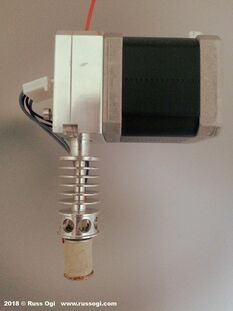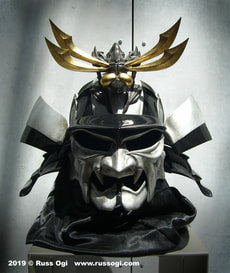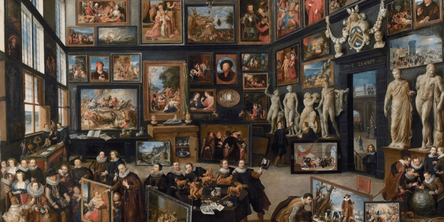 Old school hot end from the 3D Systems CubeX
Old school hot end from the 3D Systems CubeX Reading about this new 3D printer led to flashbacks of the first prosumer 3D printer, the CubeX produced by 3D Systems back in 2013. The CubeX promised to bridge the gap between hobby and professional 3D printers.
Both the Method and CubeX have the same concept...a professional 3D printing experience for a fraction of the price in a desktop system. I wonder if the Method will be able to fulfill the promise the CubeX made all those years ago.
The Method and the CubeX share in the closed source concept. Both machines utilize proprietary materials and software.
One of the most outstanding shared features is the use of proprietary material cartridges with integrated RFID chips. For both machines, the RFID chips help to ensure correct material usage as well as track the amount of filament remaining.
Back in 2013, this was a big sore spot for the majority of the 3D printing consumer market who resented paying higher prices to use a proprietary filament that many deemed the same or inferior to other filaments on the market. From reactions to the Method, a much more accepted practice now than 5 years ago but may still be a sore subject for some.
One big difference with the Method compared to the CubeX is that the Method seems to have been designed and built from the ground up as a prosumer 3D printer rather than a modified hobby printer. That should make a big difference in reliability and the plug and play capability.
In 2013, hobby printers had been around for a while and the growing user base for 3D printing expanded to include users who could benefit from a sub $5000 3D printer that could consistently produce accurate, high-quality parts straight out of the box. This group included small companies, independent engineers, makers, and designers.
While the hobby 3D printers themselves could be bought for as low as a few hundred dollars the real cost lay in the time and effort it took to get these printers to produce...anything. And reliability was always in question.
3D Systems sought to meet this need by re-appropriating the Bits for Bytes 3D printer and re-branded it as the CubeX. The result was a 3D printer that was capable of large (roughly 10" x 10" x 10"), high quality, unattended 16+ hour prints out of the box.
Putting things in perspective, most desktop 3D printers around this time took several months of tinkering to fine-tune before they could produce anything usable. Most operators babysat their printers while it was running. Larger build chambers were roughly about half the volume of the CubeX.
Many users resented the loss of open source components. But this is what made the CubeX so plug and play. Everything was tested by the manufacturer to work together. No need to find the correct software and settings to use with a particular filament. The manufacturer was able to provide quality control over the filament to reduce material jams and ensure quality prints.
Sounds good right?
Ultimately, it was all the proprietary changes that led to the demise of the CubeX. When it ran, it was a great machine. However, the reliability of the proprietary components would fail often leading to the 3D printers being temperamental at times...well...often. This was the result of retrofitting an existing 3D printer.
This meant that a user had to be his own tech support, not only learning about the technology to understand the printing problem but also doing the hands-on work needed to get the 3D printer operating again. Exactly the sort of thing the CubeX target audience wanted to avoid.
Hopefully, by creating an entirely new machine, the Method will avoid the mistakes of the past.
Neither printer has a heated build plate, something that is fairly common now. However, the Method is fully enclosed and the build chamber is heated. This enclosure could provide a big benefit in increasing overall part strength in the z-axis.
There's a bit of irony in that Makerbot made it to the top of the consumer 3D printer market in large part to its adoption of open source features.
The Method sounds good on paper but one of the most important lessons I've learned in the 3D printing industry is that good specs don't necessarily equal good 3D prints. Time will tell.
If you've had experience with the CubeX 3D printer, Makerbot's new 3D printer or have any thoughts on the prosumer 3D printer market space, please leave your comments below.
Till next time, a hui hou.





 RSS Feed
RSS Feed